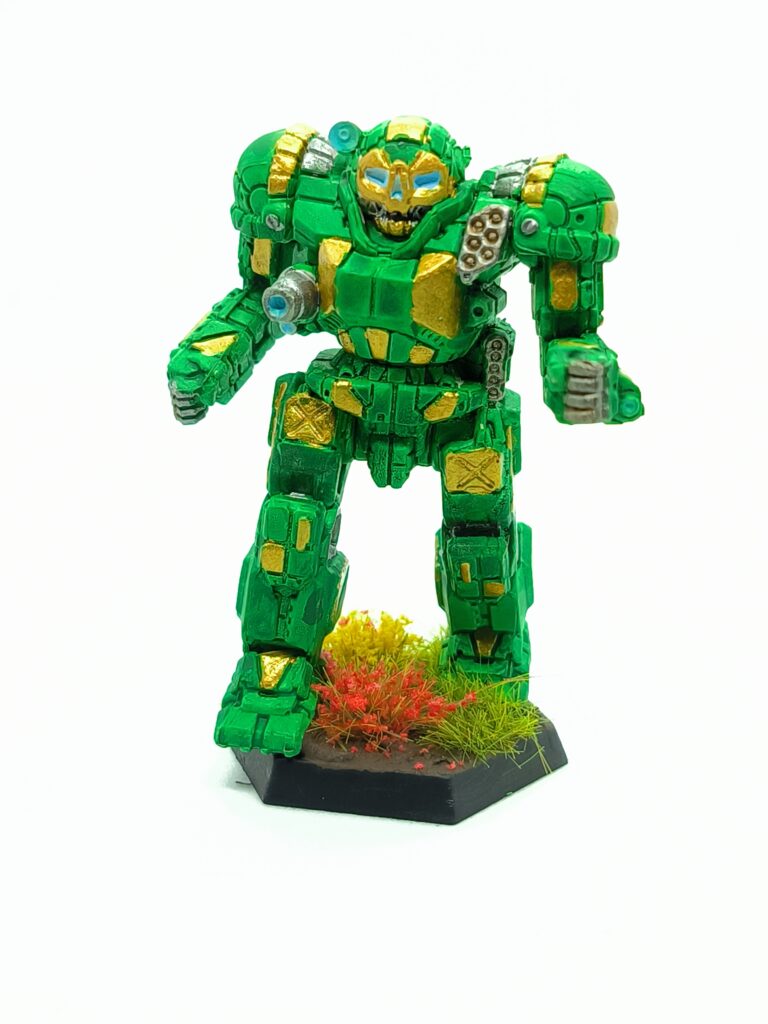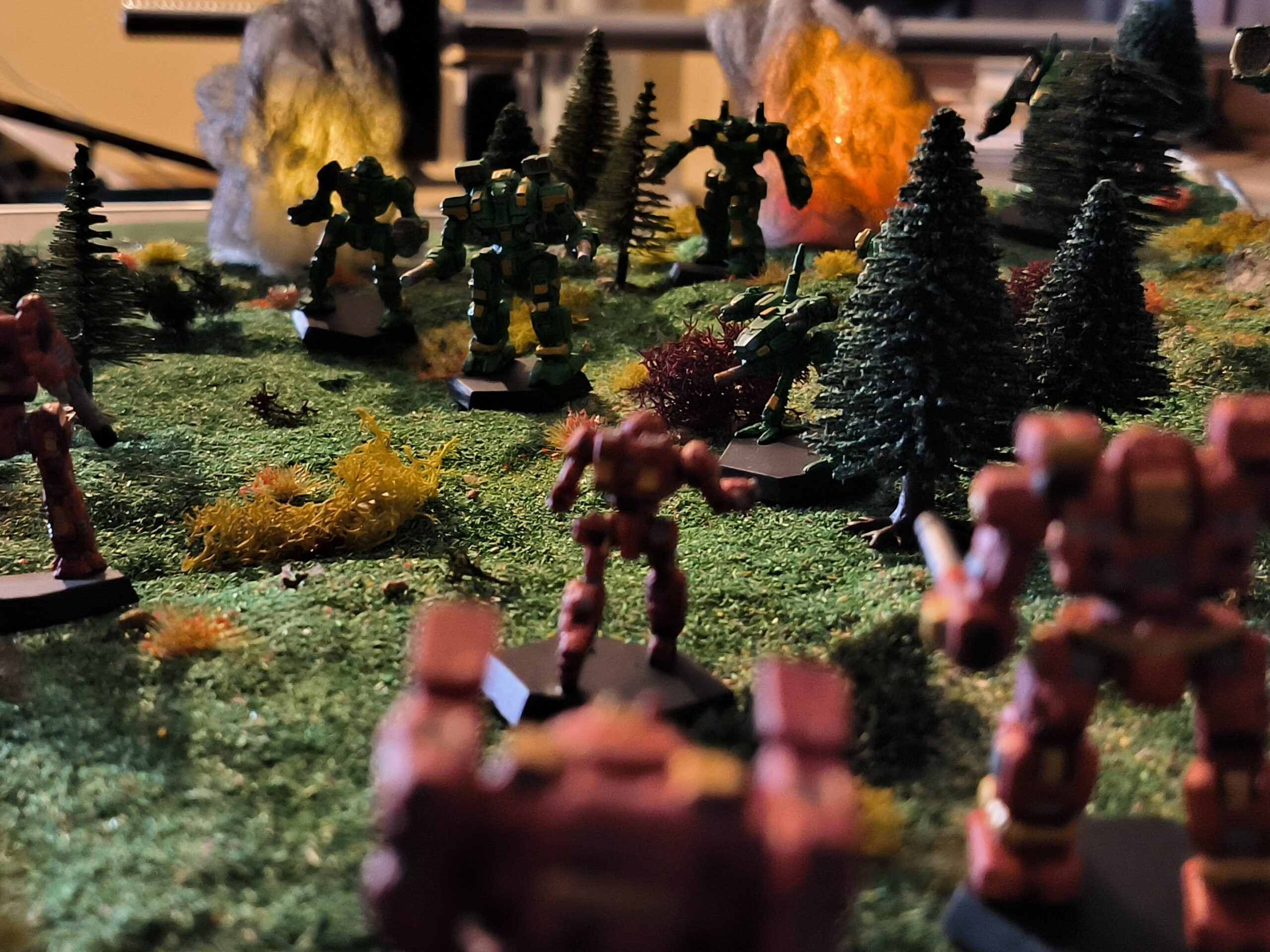The Atlas: The king of the battlefields in BattleTech Alpha Strike
The Atlas. The name alone will make any BattleTech fan nod in awe. This iconic BattleMech is the poster child for brute force and strategic presence on the battlefield. Whether in classic BattleTech or the faster BattleTech Alpha Strike variant, the Atlas is a real force to be reckoned with. But how do you use it most effectively in Alpha Strike? In this article, we take a detailed look at the Atlas and give you tips on how to best integrate this colossal war mech into your strategies .

The Atlas(AS7-D) at a glance
The AS7 is a 100-ton assault mech designed to intimidate and destroy. It is slow, but incredibly tough and heavily armed. Its classic variant, the Atlas AS7-D, is equipped with an impressive weapon configuration that includes an LRM-20, an AC/20, an SRM-6 and several medium lasers. In BattleTech Alpha Strike, this is reflected in its high attack values at short and medium range as well as its formidable armor.

Statistical values in Alpha Strike
Here is an example profile for the Atlas AS7-D in Alpha Strike:
- Point value: Approx. 52 points (depending on source and adjustment)
- Movement: 6″ (slower than most mechs)
- Attack profile:
- Short: 5
- Medium: 5
- Long: 2
- Armor: 10
- Structure: 8
- Special rules: AC2, IF, LRM, REAR
The Atlas shines with its incredible durability and ability to inflict devastating damage at short and medium distances.
Strengths and weaknesses of the Atlas in Alpha Strike
Strengths
- Unstoppable tank: With 10 armor points, the Atlas can withstand most attacks, even concentrated fire. It can act as an “anchor” in your formation and absorb enemy attacks. For example, it can effectively protect the weak side in a skewed battle formation.
- High damage at short distances: Thanks to its AC/20 and SRM-6, the Atlas can be a true machine of destruction in close combat.
- Psychological effect: The Atlas is a mech that can unsettle opponents simply by its presence. This can create tactical advantages.
Weaknesses
- Limited mobility: With a movement of only 6 inches (or 8 inches in a rare sprint action), the Atlas is easy to maneuver.
- Cost-intensive: At around 52 points, it is expensive and takes up a considerable part of your allotment.
- Weakness at long range: Its damage potential at long range is rather limited, making it dependent on short or medium ranges.
Strategies for using the atlas
- The unstoppable wall
Position the Atlas as a vanguard or “shield” for weaker units. Its massive armor can draw enemy fire while your fast or supporting mechs perform their tasks. An Atlas at the front means that the enemy has to prioritize – and often makes risky decisions. - Flank protection
The Atlas is ideal for securing flanks. Opposing light or medium mechs will think twice before taking on such a dangerous unit. - Escort for support mechs
Combine the Atlas with artillery or support mechs. Its presence protects these units and allows them to make full use of their strengths. - Combination with spotters
Thanks to the IF1 special rule(Indirect Fire), the Atlas can perform LRM strikes from a safe distance. Use fast spotters such as a Raven or Locust to uncover targets that the Atlas can attack from cover. - Slow advance (“Grind and Hold”) The Atlas works particularly well in scenarios where the map favors small or medium ranges. In urban environments or missions that require holding positions, the Atlas is unbeatable.
Units that support the AS7-D
The atlas shines when it is accompanied by the right units. Here are a few suggestions:
- Fast scout mechs (e.g. Locust or Jenner): For reconnaissance and target marking.
- Mobile fire support (e.g. Catapult, Archer): To close gaps in the firepower of the Atlas at long range.
- Infantry or vehicles: These units can fix targets while the Atlas takes on the “deathblow” role.
The Atlas: your trump card in the endgame
Although the Atlas is expensive, it can have a decisive influence on a match if used correctly. Use it as a living fortress, leaving your opponent no choice but to focus on it – and often at a high cost. The key is to compensate for its weaknesses by ensuring mobility and ranged combat with supporting units.



